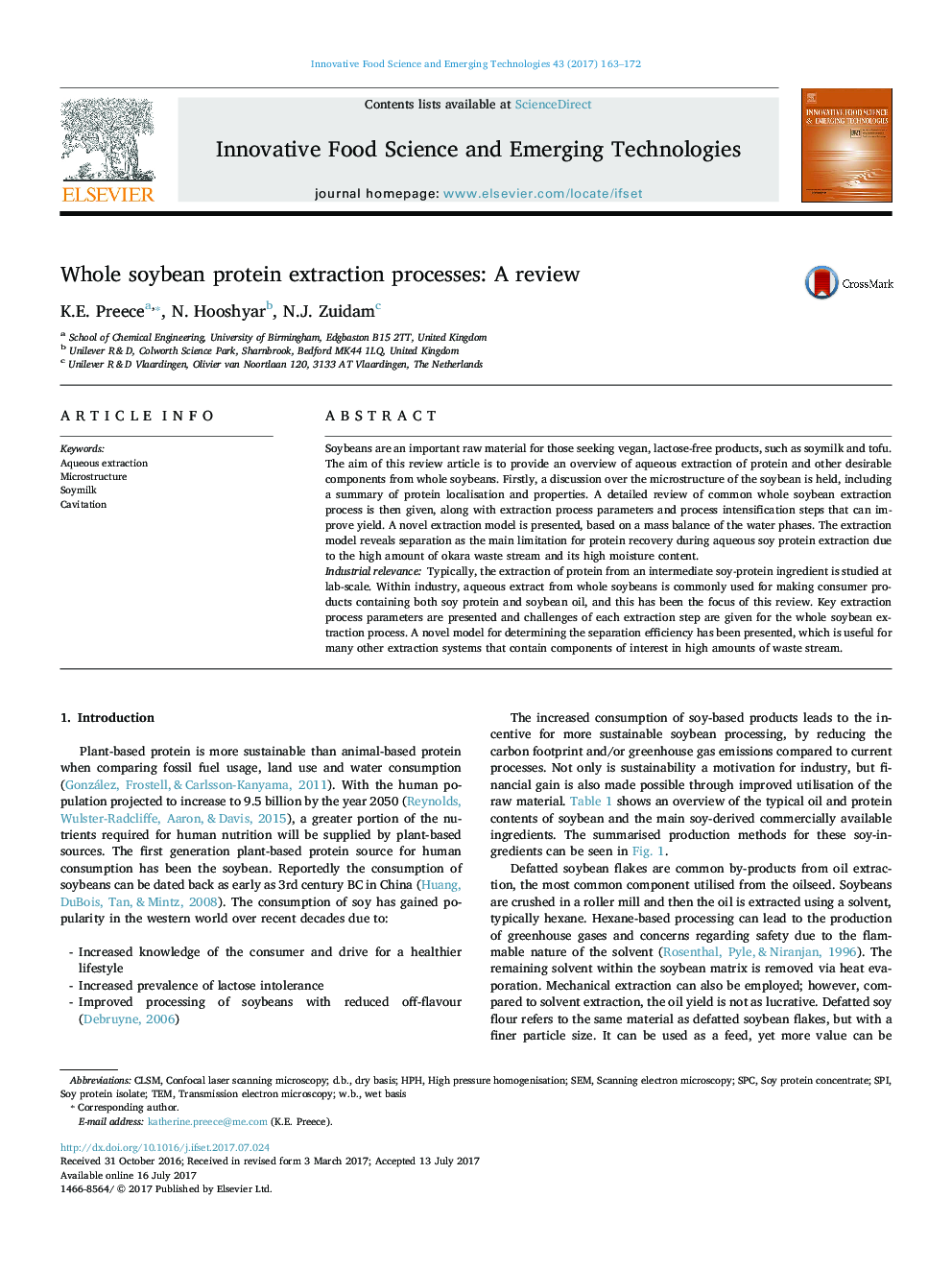| Article ID | Journal | Published Year | Pages | File Type |
|---|---|---|---|---|
| 5521698 | Innovative Food Science & Emerging Technologies | 2017 | 10 Pages |
â¢Understanding the microstructure of raw materials is vital for enhancing yields.â¢Processing parameters influencing protein extraction have been discussed.â¢By-product for soybase production, okara, contains protein in the water phase.â¢A model using liquid to solid ratio was presented to calculate separation efficiency.
Soybeans are an important raw material for those seeking vegan, lactose-free products, such as soymilk and tofu. The aim of this review article is to provide an overview of aqueous extraction of protein and other desirable components from whole soybeans. Firstly, a discussion over the microstructure of the soybean is held, including a summary of protein localisation and properties. A detailed review of common whole soybean extraction process is then given, along with extraction process parameters and process intensification steps that can improve yield. A novel extraction model is presented, based on a mass balance of the water phases. The extraction model reveals separation as the main limitation for protein recovery during aqueous soy protein extraction due to the high amount of okara waste stream and its high moisture content.Industrial relevanceTypically, the extraction of protein from an intermediate soy-protein ingredient is studied at lab-scale. Within industry, aqueous extract from whole soybeans is commonly used for making consumer products containing both soy protein and soybean oil, and this has been the focus of this review. Key extraction process parameters are presented and challenges of each extraction step are given for the whole soybean extraction process. A novel model for determining the separation efficiency has been presented, which is useful for many other extraction systems that contain components of interest in high amounts of waste stream.
